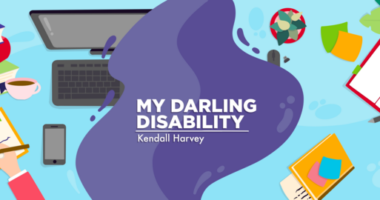Braving the new world of 2024 for Friedreich’s ataxia treatment
Results for a potential new medicine (with an awful name) create excitement

My interest was piqued this month when I read about positive Phase 2 trial results for a drug from Larimar Therapeutics, as it’s a clinical trial that I’ve been closely following. This potential treatment for my rare disorder, Friedeich’s ataxia (FA), is especially exciting for me because it offers a more or less synthetic form of frataxin, which is the protein that FA patients like me produce at an abnormally low amount.
It seems to me that the lack of frataxin is the root of FA symptoms.
Whenever I think about this treatment, called CTI-1601 when I first heard of it, I envision it like the synthetic insulin injected into diabetes patients. I’m unabashedly thrilled about this potential treatment and curious to learn about its effects. Will it be equally strong no matter when someone was diagnosed? Or will it have less effect on patients who’ve lived with a frataxin shortage for many years, like me?
No one knows these answers at this point — certainly not me. Therefore, I won’t even attempt to extrapolate from the findings. Because I’m not as educated in science as the science writers for Friedreich’s Ataxia News, my delving into this topic will end here. I encourage readers to check out early results of this clinical trial for a better description of frataxin’s role.
A drug by any other name
Even though I’m undeniably thrilled about the potential of this drug, its new name is awful: Unfortunately, an entire board of qualified individuals settled on the name “nomlabofusp.”
I guess if it delivers me frataxin, I don’t care what it’s called, but … wow.
May I suggest “FAUXtaxin?”
Regardless, reading that a new treatment appears to be on the horizon still feels foreign and unfamiliar. For most of my life, after all, my disorder was untreatable, and it only got more debilitating over time.
But as of last year, FA isn’t untreatable anymore.
On Feb. 28, 2023 (that year’s Rare Disease Day), Skyclarys (omaveloxolone) was approved by the U.S. Food and Drug Administration for FA patients ages 16 and older. Suddenly, Friedreich’s ataxia was treatable, and the FA community entered a brave new world, which I called “a new odyssey.” (I even mentioned CT-1601, worse known as nomlabofusp, in that column. I called it Scylla, which I took from “The Odyssey.”)
As I stated then, our treatment advocacy work for the FA community is far from over, even after Skyclarys’ approval. Because not all FA patients live in the U.S. and not all are 16 and older, the community cannot rest until the geographic and age restrictions of Skyclarys are eliminated. (In encouraging news, Skyclarys was approved in the European Union for those 16 and older this month.)
A year ago, Skyclarys entirely changed the expectations of those in the FA community. It’s been shown to slow the progression of FA. Even though it’s not a cure, Skyclarys is a foundation, a major step in managing the disease.
I have realistic hope that nomlabofusp and many other treatments are on the horizon. Thanks to Skyclarys, we can now believe that such medicines, even for conditions once thought untreatable, are possible.
We’re in a brave new world.
“O brave new world,/ That has such people in’t.” — Miranda, in “The Tempest” by William Shakespeare
Note: Friedreich’s Ataxia News is strictly a news and information website about the disease. It does not provide medical advice, diagnosis, or treatment. This content is not intended to be a substitute for professional medical advice, diagnosis, or treatment. Always seek the advice of your physician or another qualified health provider with any questions you may have regarding a medical condition. Never disregard professional medical advice or delay in seeking it because of something you have read on this website. The opinions expressed in this column are not those of Friedreich’s Ataxia News or its parent company, Bionews, and are intended to spark discussion about issues pertaining to Friedreich’s ataxia.








Hillie Van Heumen
Mijn dochter 34 heeft Ataxie van friedreich vraagt de hele tijd naar het medicijn en een Gentherapie. Maar wanneer komt het in Nederland duurt veel te lang. Vriendelijke groet